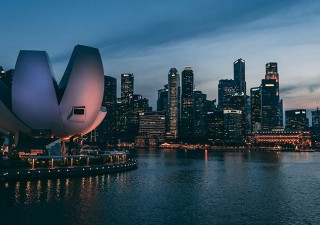27 noteworthy things about China’s PTA and PTE system
31 August 2021

The number of patents eligible for Patent Term Extension in China each year is tiny. But for any patentee having the opportunity to request for PTE, however, it’s a big deal that could be worth millions of dollars. Fei Kou explains.
With China’s new patent law coming into effect on June 1, 2021, China’s Patent Term Adjustment (PTA)/Patent Term Extension (PTE) system has been established and stipulated as follows:
Where a patent for an invention is granted four years from the date of filing of application and three years from the date of filing of request for substantial examination, the patent administrative department of the State Council shall, at the request of the patentee, provide patent term extension for unreasonable delay in the patenting process for the invention, except for unreasonable delay caused by the applicant.
For the purpose of making up the time required for the assessment and approval of the marketing of a new drug, the patent administrative department of the State Council may, at the request of the patentee, provide patent term extension for an invention patent relating to the new drug approved for marketing in China. The extension may not exceed five years, and the total effective term of the patent after the new drug is approved for marketing shall not exceed 14 years.
However, the specific implementation is still awaiting lower-level regulations, which are right around the corner, including the amendments to the Implementing Regulations of the Chinese Patent Law and the amendments to the Patent Examination Guidelines, already released for public opinion, which are expected to pass and come into force within 2021.
Due to the lagging legislative work, the patentee of a potentially eligible patent has been invited to file a request for PTA and/or PTE as early as possible after June 1, 2021, so as to avoid missing any deadline still under discussion. Such a request will be accepted by the China National Intellectual Property Administration (CNIPA, i.e., the counterpart in China to the USPTO in the United States), but it will not be examined until the implementation of the above-mentioned regulations.
The restaurant is already open. Let’s get a first glimpse of 26 noteworthy items on the menu. The “Confirmed” information below comes from the accurate interpretation of the Patent Law. The “Most likely” information is based on a proper deduction from the lower-level regulations close to their final versions. The “Uncertainty” information is borrowed from the U.S. or the EPO and uncertain whether it will be applied in China.
In any case, however, preparation in advance would be helpful for making a decision on whether, how and when to request PTA and/or PTE. Selecting an appropriate patent from more than one patent as the one eligible for PTA and/or PTE needs a comprehensive evaluation of the patent portfolio.
PTA Confirmed
- Initiation: The procedure is initiated upon the request of the patentee by paying fees. Different from the PTA in the U.S., the patent office will not take the initiative in granting a PTA.
- Eligible patent: To be eligible, the patent must be granted four years after the filing date of the application AND after three years from the date of requesting substantive examination. Both criteria should be met simultaneously.
- Restriction: No term will be disclaimed due to the lack of the terminal disclaimer system in China. This is favourable to the patentee.
- Retrospective effect: PTA is not available to a patent granted before June 1, 2021. Dramatically, a patent granted on May 31, 2021, might have a totally different fate than one granted on June 1, 2021, even if they are issued only one day apart.
PTA Most Likely
- The time limit for requesting PTA: Within three months from the issue of a patent. No extension is available.
- Calculation: The lesser of the days exceeding four years from the filing date of the application or the days exceeding three years from the date of requesting substantive examination – the delay due to the applicant’s failure to engage in reasonable efforts to conclude prosecution. As compared with the PTA in the U.S., the delay due to the failure of the CNIPA will not be calculated discriminately, which is favourable to the patentee. The PTA will be granted by the day.
- Delay due to the reexamination proceeding before CNIPA will be considered as appropriate. For the patent granted after amendment upon requesting for reexamination, however, the delay due to the reexamination proceeding before CNIPA will not be compensated. For your information, the average pendency for the reexamination proceeding is about 14 months.
- Delay due to the judicial proceeding before the court will not be considered. For your information, the average pendency for the first instance and second instance of a judicial proceeding is about one-and-a-half to two years and one year, respectively.
- Opposition proceeding against the determined PTA: It’s available to any entity or individual, including the patentee, after the PTA is granted. In contrast, the determination of a PTA shall not be subject to appeal or challenge by a third party before the PTA is granted.
PTE Confirmed
- Initiation: The procedure is initiated upon the request of the patentee by paying fees. If the patentee is different from the Marketing Authorization Holder (MAH), the written consent of the MAH is required.
- Eligible patent: Invention patent related to a new drug already obtaining marketing approval in China. The drug is limited to human drug products, not including animal drugs or veterinary biological products, pesticide products, medical devices, food additives or colour additives. See below for more information on the patent and drug categories.
- Period (5-year and 14-year rule): The extended term shall not exceed five years, and the total effective term of a patent right after the marketing approval of the new drug shall not exceed 14 years.
- Retrospective effect: PTE is not available to the patent covering a drug approved before June 1, 2021. In other words, a drug approved on May 31, 2021, has no opportunity to obtain PTE. As for a blockbuster, one more day of market exclusivity means millions of dollars.
PTE Most Likely
- The time limit for requesting PTE: Within three months from the approval of the new drug. No extension is available.
- Eligible drug categories: Innovative drug (first in class) and a portion of improved new drug (me better) approved in China. The eligible types of improved new drug are still undertermined.
- Eligible patent categories: Patent claims a product, a method of manufacturing a product, medical use of a product.
- Calculation: the marketing approval date of the new drug in China – the filing date of the patent – five years, meeting the above 5-year and 14-year rule simultaneously. The PTE will be granted by the day. As compared with the sophisticated calculation method in the U.S., the calculation method in China is easier. It’s unclear how the five years are determined, presumably based on the average pendency of the regulatory review in China.
- The obligation of the patentee: The patentee should initiatively submit the certificate of marketing approval and relevant documents reflecting, e.g., the correspondence of the claims with the approved product. Different from the procedure in the U.S., the National Medical Products Administration (NMPA, i.e., the counterpart of FDA) will not get involved in the PTE procedure. The coordination between NMPA and CNIPA is omitted.
- Preconditions:
- If one market product is covered by multiple patents, only one patent term is allowed to be extended.
- If a patent covers multiple products, only one patent term is allowed to be extended based on one product.
- The term of the patent has not expired before a request is submitted.
- The patent should be granted earlier than the marketing approval of the product.
- The patent has never been granted PTE before.
- Rights derived from PTE during the period when the patent term is extended: The protection scope is limited to the indication approved for the new drug. A later approved indication will not be protected by the PTE.
- Availability of new PTE for newly approved indication: Yes. A new PTE can be requested, so long as there are other eligible patents having not been granted PTE.
- Opposition proceeding against the determined PTE: Available to any entity or individual, including the patentee, after the PTE is granted. In contrast, the determination of a PTE shall not be subject to appeal or challenge by a third party before the PTE is granted.
- PTA and PTE can be calculated separately and granted to the same pharmaceutical patent together.
PTE Uncertainty
- It is not required to be first approved globally: A drug first approved in China will suffice.
- Unavailable interim extension: If the regulatory review period extends beyond the expiration of the patent term in effect, a PTE will not be granted.
- Although only one PTE is granted per drug, more than one request for PTE can be submitted for patents covering the same drug. The patentee will have the opportunity to choose which PTE should be granted if more than one request is approved simultaneously.
- Although only one PTE is granted per patent, more than one request for PTE can be submitted for the same patent covering more than one drug. The patentee will have the opportunity to choose which PTE should be granted if more than one request is approved simultaneously.
Official statistical data from CNIPA shows that the average number of granted invention patents recently is about 50,000 per month, including about 16 percent foreign patents. The average pendency for a foreign patent application to be granted is more than 50 months. Assuming 15 percent of the granted patents are eligible for PTA, the number is about 90,000 per year. Undoubtedly, a large number of patentees will benefit from the newly introduced PTA procedure.
Official statistical data of the NMPA shows that the total number of the approved New Drug Application (NDA) in 2020 and 2019 was 208 and 162, respectively, roughly three to four times the number of new drugs approved by the FDA. If the eligible drug is restricted to be first approved globally, the number will be smaller. Irrespective of the accurate pendency of the regulatory review, the number of patents eligible for PTE per year is tiny as compared with that of PTA. For any patentee having the opportunity to request for PTE, however, it’s a big deal worth millions of dollars.







